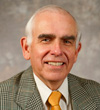 I have been teaching LDS Church History and Doctrine for much of my professional career. However, my interest in and commitment to this field began in my life at least as early as ten years of age. In the year 1956 I participated in a family pilgrimage, visiting Church History sites from Vermont to Utah. It was a summer of unforgettable memories as eight family members crowded into a small Ford sedan in a trip that covered over 6,000 miles. Despite the crowded conditions, the lack of seat belts, the heat, and the camping out in tents every night, I began to taste and feel Church History. A year or two later I witnessed my grandfather’s conversion in the Sacred Grove and later travelled cross-country with him to the temple, and this at a time when he was dying of cancer. I came to feel Church History even before I read Church History. I did not then know all the academic arguments, the philosophical debates, or divergent paths of the restoration, but I gained a foundation of understanding, feeling, and faith that has stayed with me since. I believe the Lord in his kindness impressed upon my young soul a testimony that no amount of book learning could ever provide. Thank God for that foundation.
I have been teaching LDS Church History and Doctrine for much of my professional career. However, my interest in and commitment to this field began in my life at least as early as ten years of age. In the year 1956 I participated in a family pilgrimage, visiting Church History sites from Vermont to Utah. It was a summer of unforgettable memories as eight family members crowded into a small Ford sedan in a trip that covered over 6,000 miles. Despite the crowded conditions, the lack of seat belts, the heat, and the camping out in tents every night, I began to taste and feel Church History. A year or two later I witnessed my grandfather’s conversion in the Sacred Grove and later travelled cross-country with him to the temple, and this at a time when he was dying of cancer. I came to feel Church History even before I read Church History. I did not then know all the academic arguments, the philosophical debates, or divergent paths of the restoration, but I gained a foundation of understanding, feeling, and faith that has stayed with me since. I believe the Lord in his kindness impressed upon my young soul a testimony that no amount of book learning could ever provide. Thank God for that foundation.
Church History is not so much about debates or facts, myths or dates, books or historiographies. For me it is less about the past and more about the present and future. In short, I have felt my way through Church History and its doctrines, and the peaceful, sweet feelings of the Holy Ghost have ever confirmed my childhood testimony that, with all its ups and downs, frustrations and disappointments, our history is a wonder to behold! Men and women throughout our history may have made shipwreck of their lives but the Gospel message of faith, hope, forgiveness, and love remains a constant no matter who the changing personalities have been or what the changing lay of the land may be. And for all the arguments put forth that the Church has changed, that we gave up this or that practice, and that we are not the same Church in the twenty-first century as we were in the beginning, I have a contrary view. Like a corn stalk that starts with a small seed and blade of grass and then grows and matures into something almost unrecognizable by those who have been away for a time, this is the same Church and Gospel today in 2011 as it was in 1830! I look back upon the pages of Church History in much the same way I look upon my childhood. ‘So that’s what the experience means.’ ‘So that is what I have learned from it.’ If, as Wordsworth once wrote, “The child is father to the man,” than our history is critical to know because it tells us why we now are what we are. It is a mirror to our souls.
And the same principles and teachings remain, despite changing policies and priorities and even temporary practices. The same spirit pervades, and not one just of pilgrimage or curiosity but one that brings a lifetime of joy and lasting change for the better.
I am at peace with our history because of the peace that the Spirit of the Lord has given me concerning it. It remains for me a testimony of the hand of the Lord.
——————————————–
Richard E. Bennett, a native of Sudbury, Ontario, Canada, served a mission to Texas, 1967-1969. After earning a Ph.D. in American intellectual history from Wayne State University, he was the head of Special Collections at the University of Manitoba, 1978-1987, during which time he also served as a stake president in Winnipeg. He is the author of several books and articles, mainly on nineteenth-century LDS History, including We’ll Find the Place: The Mormon Exodus, 1846-1848 (Deseret Book, 1997)and Mormons at the Missouri: 1846-1852 (University of Oklahoma, 2004). Presently, he is the Church History editor for BYU Studies and an associate editor of the Journal of Book of Mormon Studies.
Posted April 2011
